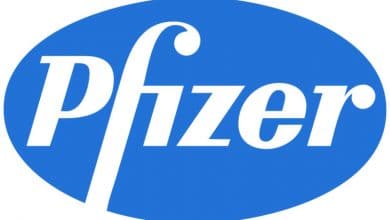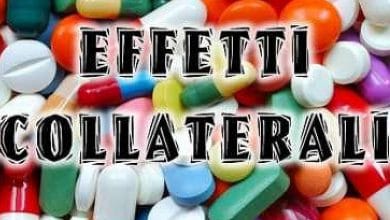
Every year, public health facilities spend 7 billion euros on hospital medicines.
 Due to its great importance, Consip has dedicated innovation and savings projects and initiatives that have given great results in terms of efficiency and cost reduction, but the prospects for further efficiency of the public system depend today on product innovation (single-dose) and of process (logistics). This is the only way to defeat inefficiency, waste and fraud, where they still exist. Since 2008 Consip has supported the entities of the National Health Service in the purchase of medicines, announcing a number of tenders on their behalf on an electronic platform, for a total value of approximately 4 billion euro, and obtaining average savings of 10% on prices; among these we must point out – in terms of amount and complexity – those of the Sicily Region, the Veneto Region and the Lazio Region, where thousands of medicines have been put out to tender.
Due to its great importance, Consip has dedicated innovation and savings projects and initiatives that have given great results in terms of efficiency and cost reduction, but the prospects for further efficiency of the public system depend today on product innovation (single-dose) and of process (logistics). This is the only way to defeat inefficiency, waste and fraud, where they still exist. Since 2008 Consip has supported the entities of the National Health Service in the purchase of medicines, announcing a number of tenders on their behalf on an electronic platform, for a total value of approximately 4 billion euro, and obtaining average savings of 10% on prices; among these we must point out – in terms of amount and complexity – those of the Sicily Region, the Veneto Region and the Lazio Region, where thousands of medicines have been put out to tender.
Pharmaceutical products, in fact, are a product category characterized by the number of active ingredients and suppliers on the market; for this reason, the tenders are structured on a considerable number of lots, one for each active ingredient and are therefore very complex especially from a procedural point of view, requiring long times for the evaluation of the offers. For this reason, they lend themselves well to online negotiation, allowing significant process and economic savings for contracting authorities and companies; the use of the Consip telematic platform, in fact, allows a considerable reduction of the procedural burdens, the simplification of the methods of participation for companies and of the evaluation of the offers by the selection commission, allowing shorter times for the award (a few hours instead of months).
By virtue of the success achieved with the tenders for the Regions and with a view to the evolution of the offer, in 2011 Consip launched a new purchasing tool, which was inaugurated precisely with a tender relating to the drug category worth 12 billions of euros in three years: this is the Public Administration's Dynamic Purchasing System (Sdapa), which allows all the Public Administrations to negotiate tenders above and below the EU threshold for the acquisition of medicines, in a fully electronic manner, inviting all qualified economic operators admitted by Consip to the System itself. In this way, a list of suppliers is made available to the Public Administrations who demonstrate that they possess the technical and economic requirements set out in the tender specifications and it is then the individual administrations that carry out the tender procedure using the telematic platform and inviting the accredited companies.
 The entry of companies on the System is free and is allowed for the entire duration of the tender (three years which can be extended to four); in this way the contracting authorities have a wide range of offers and, therefore, can obtain better supply conditions thanks to the extensive competition that is established between competitors. About 200 suppliers are currently accredited on Sdapa Products pharmaceuticals, including both the most important operators in the pharmaceutical sector and many small and medium-sized companies in the sector. Just recently, an update and extension of the list of active ingredients was published, reaching an availability of 4,646 combinations of active ingredient/pharmaceutical form/dosage.
The entry of companies on the System is free and is allowed for the entire duration of the tender (three years which can be extended to four); in this way the contracting authorities have a wide range of offers and, therefore, can obtain better supply conditions thanks to the extensive competition that is established between competitors. About 200 suppliers are currently accredited on Sdapa Products pharmaceuticals, including both the most important operators in the pharmaceutical sector and many small and medium-sized companies in the sector. Just recently, an update and extension of the list of active ingredients was published, reaching an availability of 4,646 combinations of active ingredient/pharmaceutical form/dosage.
Since the launch of the System, the administrations have already carried out tenders for a value of over 4 billion euros on Sdapa and have managed to obtain significant economic benefits. And it is precisely the nature of the economic benefits linked to greater purchasing efficiency that deserves further study. In fact, it is important to underline that obtaining price reductions certainly has its relevance, but it is only the first step. The efficiency of the purchasing process in terms of unit price reduction – entrusted directly to a qualified entity such as a central purchasing body or, as in the case just described, using telematic tools supplied by Consip – cannot be the priority especially in the health sector, where the beneficiaries of supplies are sick people and where therefore attention to the quality of what you buy is essential.
Much more important and relevant also from an economic point of view are, on the other hand, the benefits that can be obtained with an incisive modification of the purchasing processes themselves and with their integration. Consip has launched a process to offer public health structures support towards the evolution and modernization of these processes and towards the introduction of new procurement logics, which are not limited to the reduction of the unit cost but which intervene on efficiency managerial. The dynamic purchasing system constitutes the first step, because it represents above all a benefit from the point of view of streamlining procedures which also has an economic value, but further ones can and must be implemented.
For example, also comparing itself with the realities of other countries, Consip has studied the possibility of implementing projects for the innovation of management processes linked to the supply of goods and services, such as the creation of single-dose packages and drug logistics. In fact, the objective is to promote actions that allow better control of the entire supply chain and therefore a more rational use of resources, so as to reduce their use and allow efficiency recoveries within the system. Only in this way will our public system be able to maintain sustainability, efficiency, and above all the high levels of service for Italian citizens.
20 – 09 – 2014 – Domenico Casalino – formiche.it
Dominic Casalino, managing director of Consip Spa
Article published in the August/September issue of Formiche magazine
Healthcare, now you save. 246 million less on gauze, needles and meals
The Region strengthens the Single Purchasing Center and sets reference prices for over 500 products. Tenders for medicines and laundry services.
by MAURO FAVALE – 21 September 2014 – R.it Rome
 They got the best prices for hypodermic needles and gauze, they saved 4 euros on each meal for hospital patients, they reduced the cost of products that were already worth a few cents by as much as 50%. In the end, however, the bill is one of the important ones: 246 million euros, with the minus sign in front. Because there is a lot of money saved in 2014 by the Lazio Region in the health sector, only with regard to the purchase of goods and services.
They got the best prices for hypodermic needles and gauze, they saved 4 euros on each meal for hospital patients, they reduced the cost of products that were already worth a few cents by as much as 50%. In the end, however, the bill is one of the important ones: 246 million euros, with the minus sign in front. Because there is a lot of money saved in 2014 by the Lazio Region in the health sector, only with regard to the purchase of goods and services.
A rationalization of expenditure (“From this point of view, it is not a question of cuts”, they assure in via Cristoforo Colombo) obtained thanks to the strengthening of the Single Purchasing Centre. The management, led by Elisabetta Longo since May 2013, has made a virtue of necessity. Thus, in a Region with the health system under commission for 8 years, with a deficit which at the end of the year (barring surprises) should still settle at 200 million euros, the first trick was to tighten up on purchases.
"We were among the forerunners at a national level - explains Longo - in setting the reference prices for medical devices". A provision that involved over 500 products to which a range was assigned from which no local health authority was able to deviate. And so, for example, hypodermic needles per syringe went from €0.0013 to €0.008. The same for gauze, from 0.33 euro cents to 0.27. Or sterile tubes for blood samples: from 0.0124 to 0.058. All products of very large consumption in healthcare, ordered in enormous quantities, the reductions of which have a significant impact on the final budgets.
Effect of centralized tenders, the other major leverage available to the Single Purchasing Centre. Thanks to this tool, today a "food day" for each patient (from breakfast to dinner through lunch and a snack) costs around 11 euros. Four less than the 2012 average. Back then, before the centralized tender, a daily meal in some local health authorities could cost as much as 25 euros. "But with the savings, the quality does not suffer - explains the director of the plant - because some nutritionists also took part in the catering specifications that we prepared". The same goes for the washing and cleaning of linen, sheets and mattresses: previously, for a day of hospitalization, the average cost was 5.5 euros. Today it dropped to 3. Not to mention the drugs or more delicate medical equipment, such as pacemakers: to purchase a so-called "tricameral" one, the Lazio Region previously paid up to 3589 euros. Today, however, he pays 2,200 euros, with savings of almost 40%.
The results obtained in 2014 are judged "incredible" by the governor Nicola Zingaretti: "Before there were more costs, more waste and less services - he continues - now we have less costs, less waste and better services for citizens". Beyond the triumphalisms, however, the savings are significant and demonstrate how it is possible to activate spending review processes within healthcare. “When coordination is lacking – explains Longo – when everything is left to individuals, then it is easier for the market to be out of control. If there is central governance, on the other hand, it becomes more difficult to give space to unbalanced individual behaviours”. Also for this reason, the other front on which the single center operates is that of "supporting" the Local Health Authorities in the purchasing processes, forcing them to operate on the so-called "electronic market" for some products (using Mepa and Consip, the agencies through the which the public administration is supplied). For everything else, however, there are the tenders of the single Central.
Carlo Cottarelli: "I earn 11,900 euros per month". Plus the IMF pension (€18,300)
ROME – “I earn 11,900 euros a month”. The Commissioner for Spending Review, Carlo Cottarelli, he confesses to the newspaper The weather all the numbers of his assets and publishes them online: income, houses, business and company shares.
But how much does he earn exactly the man of government cuts Renzi? In addition to the salary of public expenditure review commissioner, 258 thousand euros gross per year, Cottarelli receives a pension from International Monetary Fund, where he worked until last October. Others 220 thousand euros, which in total they do 478 thousand euros gross per year. But specify:
“I resigned from the International Monetary Fund the day before I was appointed spending commissioner.”
And, let us add, to receive the pension from the IMF. Cottarelli also inserts the net values in the declaration: 118,500 for retirement And 140,000 as commissioner of government. His effective paycheck is therefore of 21,500 euros per month for twelve months.
“If I had retired and remained in the United States – he specifies – my pension would have been taxed at the rate of 10%. Instead, I regularly pay for everything in Italy”.
His real estate assets include two houses: an apartment worth $850,000 in washington, jointly owned with his wife, and one in Cremona worth 250,000 euros. He has a stake in the Azimut investment fund worth 1.8 million.




